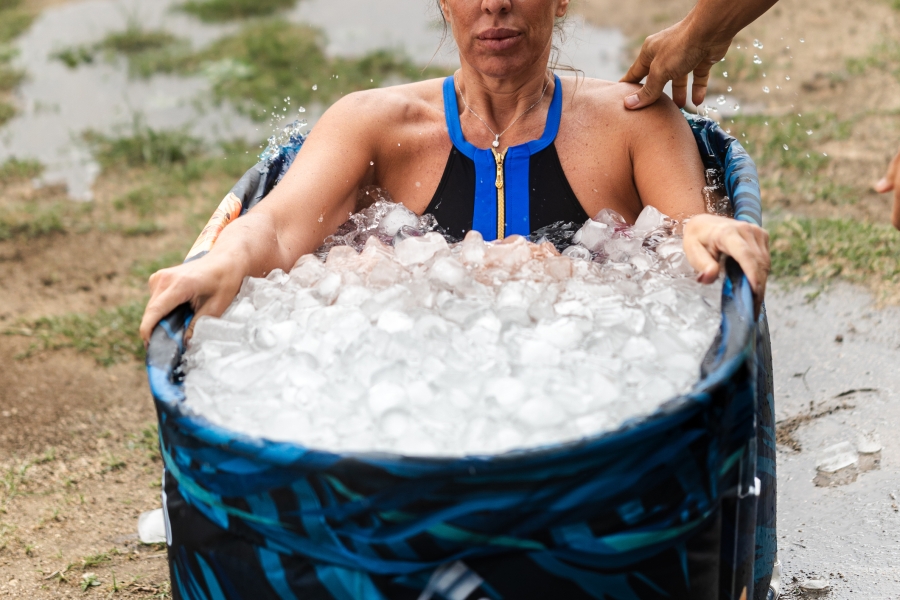I tell my patients that regular physical activity is one of the best ways older adults can protect their health and preserve their strength and mobility. But there's a catch: Older adults are also at a higher risk of getting injured during exercise.
Overuse injuries, broken bones, and torn or ruptured cartilage or ligaments can sideline older adults for long stretches. This can result in significant losses in fitness that can be hard to get back.
The good news is that exercise-related injuries can often be avoided by incorporating good habits into your routine and knowing your limits. Here's what I tell my patients about staying active safely as they age.
How aging raises the risks
Some of my patients are surprised to hear that most people begin to experience bone, joint, tendon and muscle loss sometime in their mid-40s to early 50s. Certain factors can accelerate the loss of these tissues, including having a small body frame, a history of smoking, or heavy use of alcohol.
These changes can make exercise-related injuries more likely.
For instance, the loss of muscle mass might make it harder to keep your balance, increasing the risk of falls. A decrease in cartilage around the joints can cause inflammation, stiffness, and pain. And tendons become drier and stiffer with age, making them more prone to tearing if they’re stretched just a little too far.
That’s not all: when an injury does happen during older middle-age and beyond, it can take longer to bounce back. Experts don’t fully understand why the healing process slows down, but they suspect that it’s caused by factors like increased inflammation and cells that work less efficiently to repair the damage. Hormone changes can play a role too. For example, the hormone changes that occur during menopause are linked to an increased rate of bone loss.
Common exercise injuries in older adults
Adults 50 and older are prone to more exercise-related injuries in general, compared with younger adults. However, when I see older adults in my orthopaedic practice, I tend to see certain injuries more often. They include:
- Overuse injuries. These include tennis elbow and tendonitis. Though sports such as golf or tennis are a frequent cause, any repetitive movement (like yard work, typing, or even knitting) can cause these injuries.
- Stress fractures. This type of injury is especially common in the lower leg and foot. These thin fractures are often the result of repetitive impacts, like running on a hard surface.
- Lower back pain. One of the most common issues in older adults, pain in the lower back often stems from natural wear and tear, too much sitting, or carrying excess weight.
- Rotator cuff tears. The rotator cuff is the part of the shoulder joint responsible for lifting and rotating the arm. Age-related wear and tear can cause the area to become weaker, making it more prone to injury. Activities with frequent overhead motions like golf, swimming, tennis, and basketball can often cause rotator cuff issues.
- Meniscus tears. These tears to the cartilage cushioning the knee joint can strike as a result of repeated bending of the knee. Think climbing stairs, hiking, kneeling, or squatting.
- Osteoarthritis is another common problem among my older patients. It’s caused by wear and tear to the cartilage that cushions the body’s joints. This form of arthritis is especially common in the hips, knees, and spine, and it can cause pain, stiffness, swelling, and a loss of flexibility in the affected areas.
6 steps to safer exercise
I like to remind patients that there are no guarantees with physical activity. Regardless of the precautions a person might take, sometimes an injury still happens. However, the right approach can help make exercise safer. I encourage my patients in their 40s, 50s, and beyond to:
- Find an activity you enjoy, and stick with it. It's normal to lose some strength and fitness as we get older. But regular physical activity can help you maintain a higher level of fitness compared with people who are sedentary. So it’s important to find a form of exercise that works for you and stick with it most days of the week.
- Know your limits. The right workout at age 55 may not be the same as it was at age 25. Be willing to adapt to an age-appropriate routine. For example, if you need to avoid high-impact exercise, you might switch your workout from running to walking or swimming.
- Say “yes” to strength training. Lifting weights is one option, but it’s not the only way to build and maintain muscle strength. Resistance bands and yoga are popular options. Even everyday tasks like carrying groceries can play a role.
- Incorporate balance exercises. Better balance decreases the risk of falls, both during physical activity and while you're going about your day. Yoga, Pilates, and tai chi all fit the bill, but honing your balance can also be as simple as marching in place or standing on one foot. Make sure to have a chair or a person to help you keep your balance.
- Get serious about stretching. Incorporating gentle stretching before and after a workout will help you stay flexible and reduce your risk of injury.
- Get enough sleep. Older adults typically need 7 to 9 hours per night. But you might need more — up to 10 hours — on days after a strenuous workout.
Staying active can help you stay healthy
The bottom line? Taking care of your muscles, bones, and joints can help you avoid an injury, so you can stay active and support your health. If you're already experiencing symptoms of an injury, the orthopaedic experts at Temple Orthopaedic & Sports Medicine can help. Schedule your appointment online or call 800-TEMPLE-MED.
Helpful Resources
Looking for more information?
